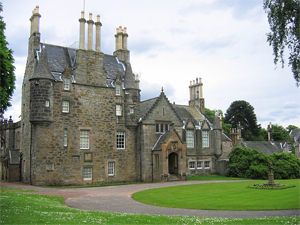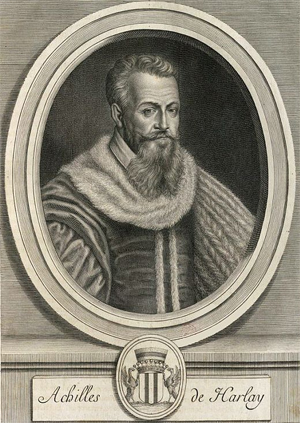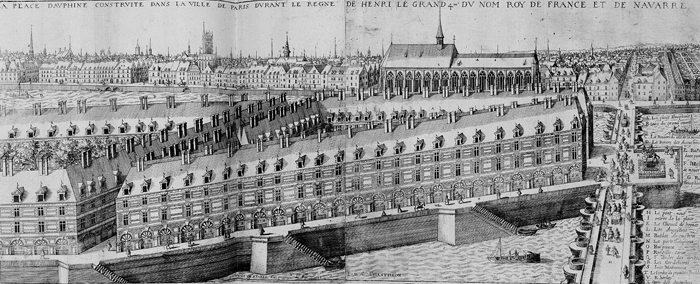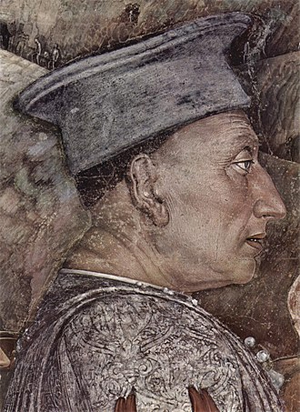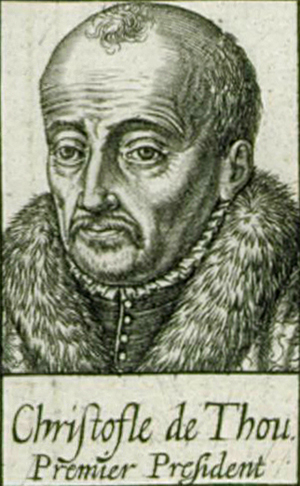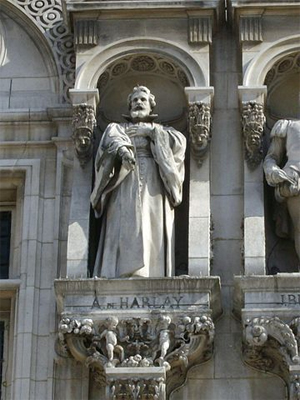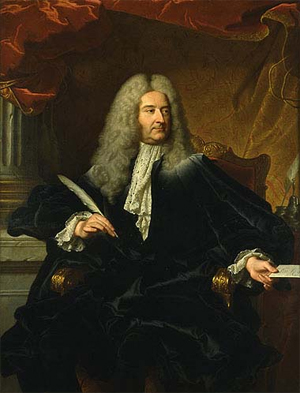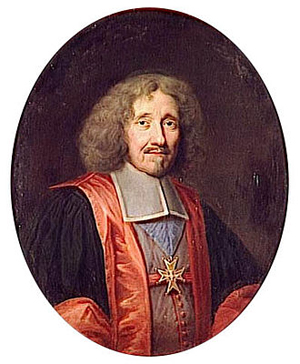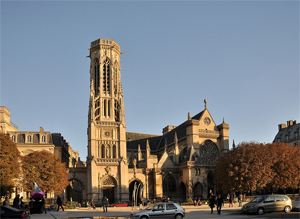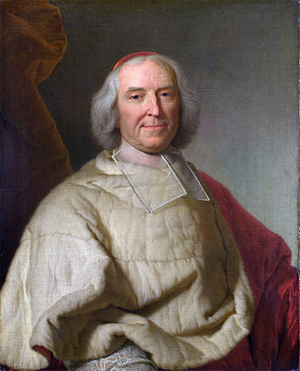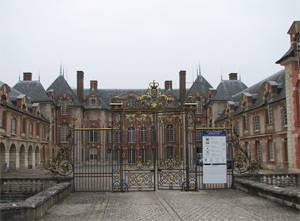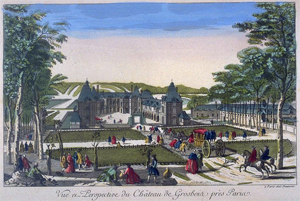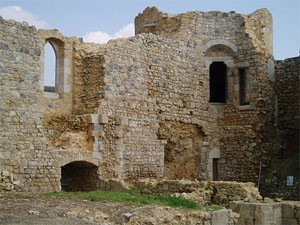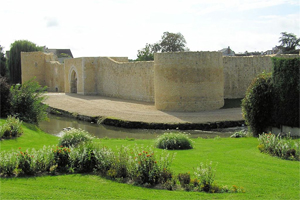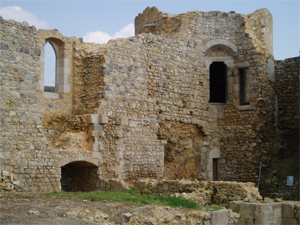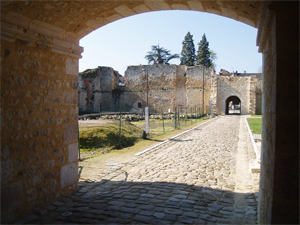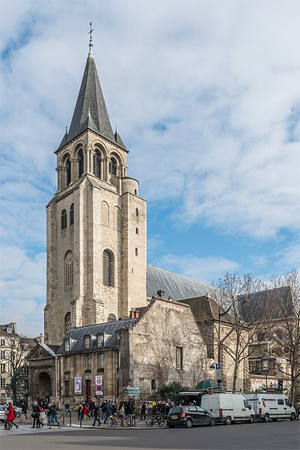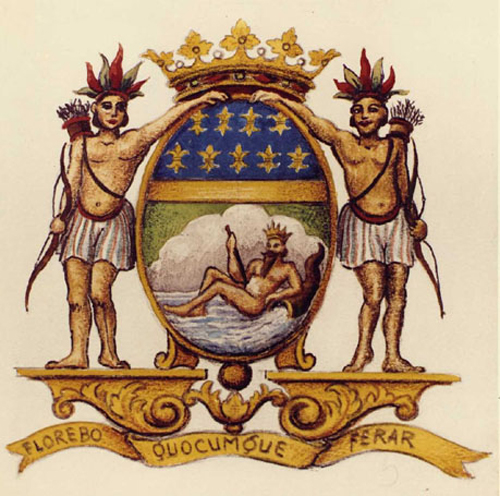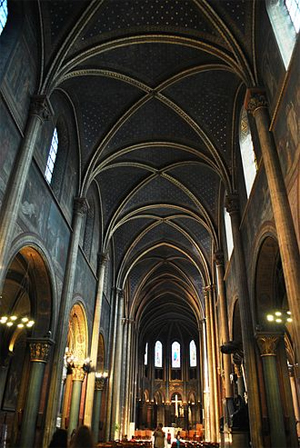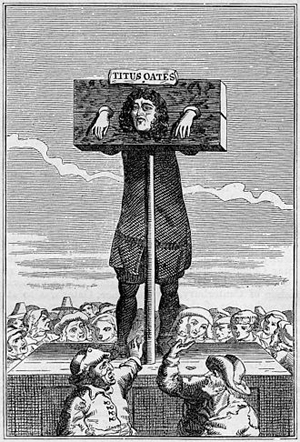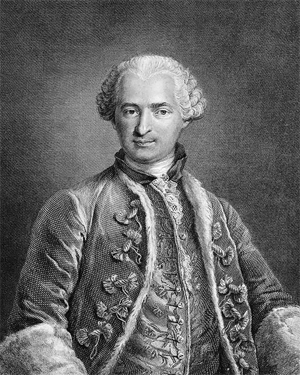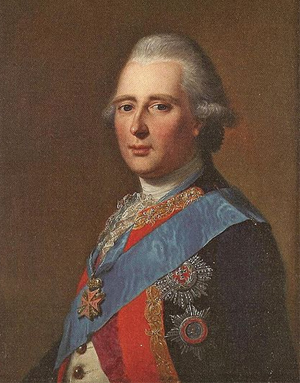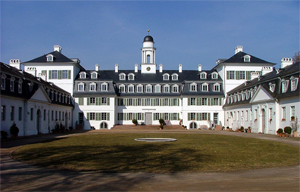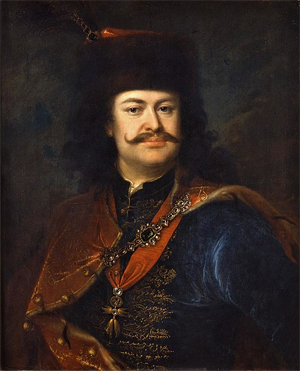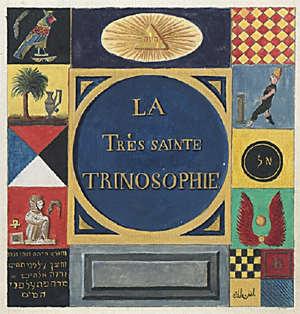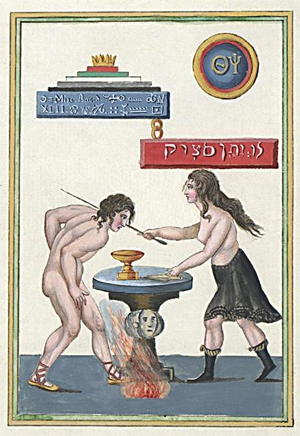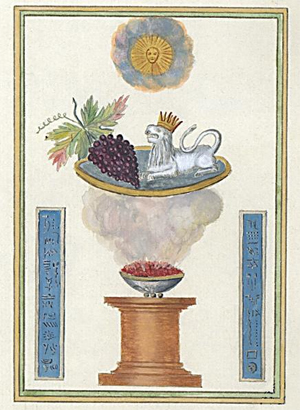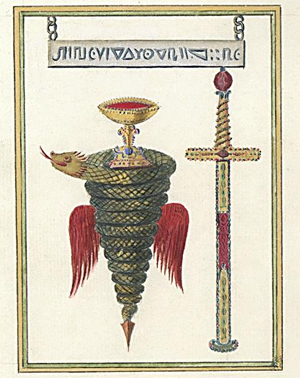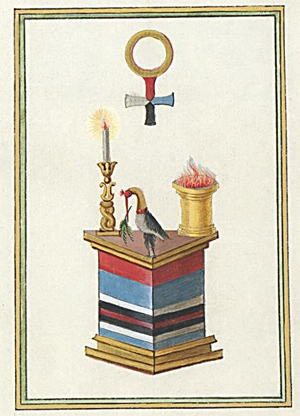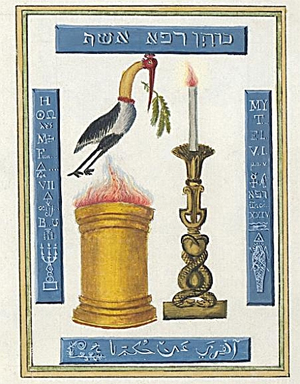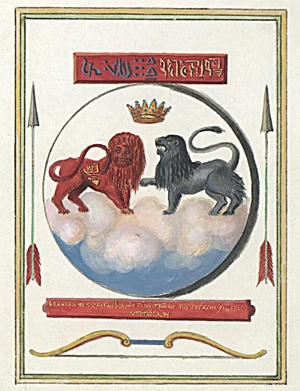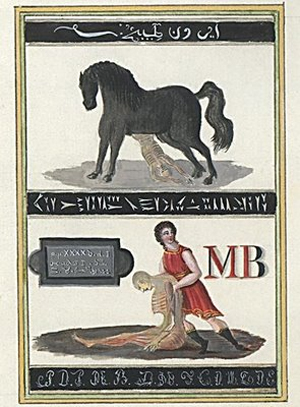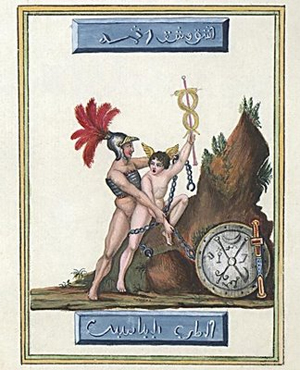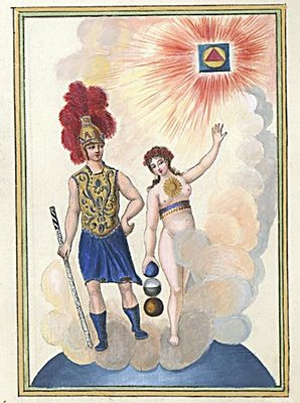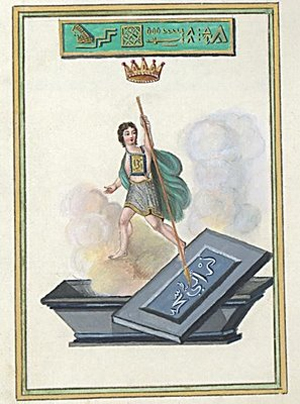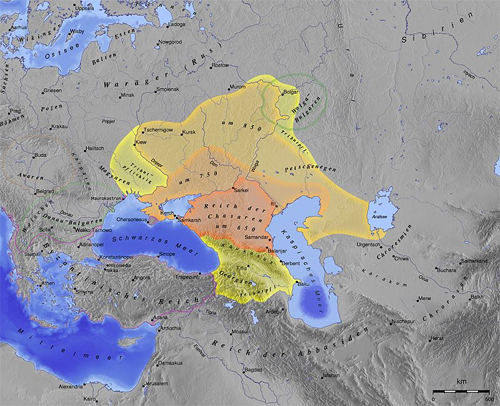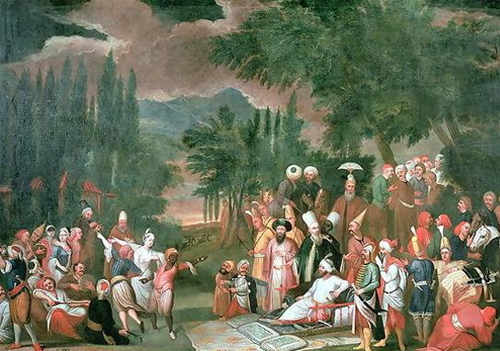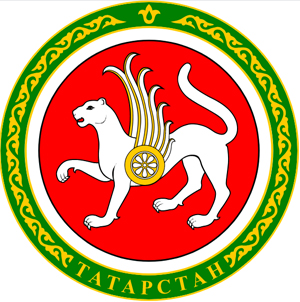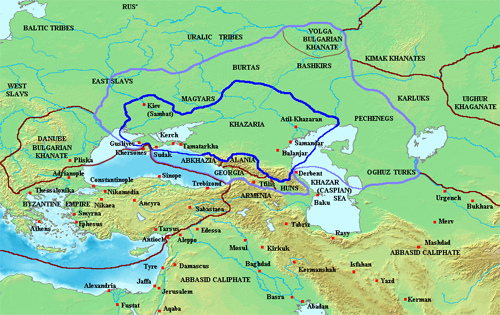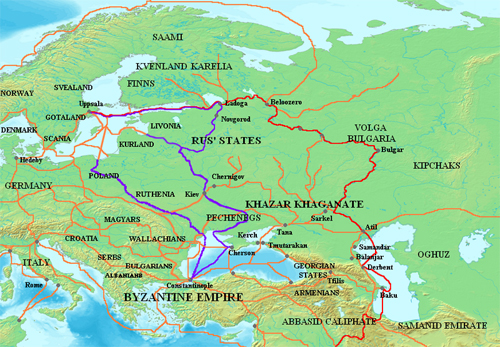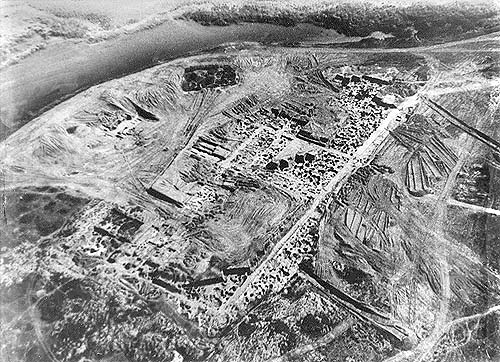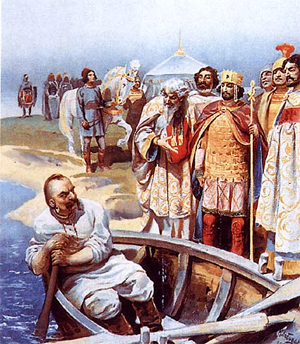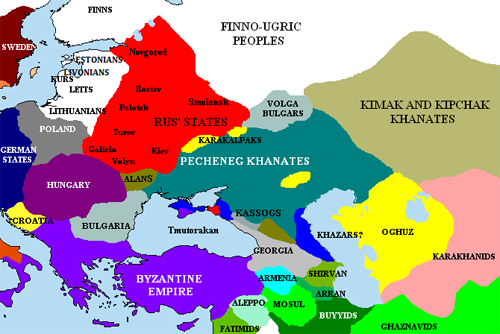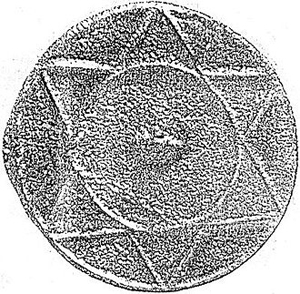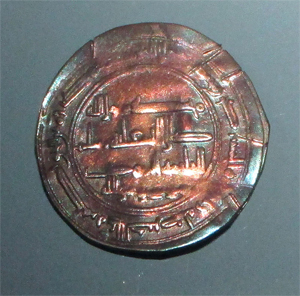The Author of the Ezourvedam: Early Speculations, Excerpt from Ezourvedam: A French Veda of the Eighteenth Century
Edited with an Introduction by Ludo Rocher
W. Norman Brown Professor of South Asian Studies, University of Pennsylvania
© 1984 -- John Benjamins B.V.
NOTICE: THIS WORK MAY BE PROTECTED BY COPYRIGHT
YOU ARE REQUIRED TO READ THE COPYRIGHT NOTICE AT THIS LINK BEFORE YOU READ THE FOLLOWING WORK, THAT IS AVAILABLE SOLELY FOR PRIVATE STUDY, SCHOLARSHIP OR RESEARCH PURSUANT TO 17 U.S.C. SECTION 107 AND 108. IN THE EVENT THAT THE LIBRARY DETERMINES THAT UNLAWFUL COPYING OF THIS WORK HAS OCCURRED, THE LIBRARY HAS THE RIGHT TO BLOCK THE I.P. ADDRESS AT WHICH THE UNLAWFUL COPYING APPEARED TO HAVE OCCURRED. THANK YOU FOR RESPECTING THE RIGHTS OF COPYRIGHT OWNERS.
The Author of the Ezourvedam: Early Speculations
Voltaire obviously did not have a clear idea on the author of the EzV.35 On the one hand he seems to suggest the name of Chumontou; on the other hand he mentions a learned Brahman both as the author of the Sanskrit original and the French translation. Thus, in the Additions a l'essay sur l'histoire generale (1763:18): "I have in hand the translation of one of the most ancient manuscripts in the world; it is not the Vedam which is so much talked about in India but has not yet been communicated to any European scholar; it is the Ezourvedam, an ancient commentary, composed by Chumontou, on this Vedam, on that sacred book of which the Brames say that it has been given to mankind by God himself. This Commentary has been written by a very learned Brame, who has rendered important services to our East-India Company; and he himself has translated it from the sacred Language into French." In the Pricis du siecle de Louis XV Voltaire (1769-1785:25.313; 1774:2.86) refers more specifically to the translator of the EzV. He quotes someone's opinion that the Brahmans "afford the purest model of true piety, which is to be found on the face of the earth," and explains in a note: "The high priest of the island of Cheringam, in the province of Arcate, who justified the chevalier Law,36 against the accusations of governor du Pleix, was an old man, aged one hundred years, and respected for his incorruptible virtue; he understood the French language, and was of great service to the East-India Company. It was he that translated the Ezour-Wedam, the manuscript of which I sent to the royal library."
As could be expected, Anquetil Duperron did not ask questions about the original text and its author. But he had different ideas than Voltaire on its translator. He states (1771:lxxxiii) that the French EzV belonged to Mr. Barthelemy, "who probably ordered that a translation be made from the original by one of the interpreters of the Company, who were under his orders." In 1808 Anquetil expresses a very different opinion, which will be quoted in another context.
Sainte-Croix accepts what is said on the title page: "translated by a Brahmin." He adds (1778:1.x) that, although he has revised the style of the translation, he has not corrected all mistakes "to preserve for the Indian author that foreign aura which inspires confidence in the readers, and will convince them of our trustworthiness." As far as the author of the original is concerned, he speaks (1.165) of "Chumontou, the author of the Ezour-Vedam." We have seen earlier that he also had specific ideas on Chumontou's philosophic affiliation. Hence his conclusion (1.146): "We find all over the Ezour-Vedam the principle tenets of the doctrine of the Ganiguels ..., there is consequently no doubt that the book has been composed by a philosopher of that sect."
Missionaries
Needless to say, the situation changed drastically after 1782, when the EzV came to be looked upon as a Christian composition rather than an authentic Hindu scripture. From now onward one could not avoid raising the question of the authorship of the original version. There were two possibilities: either the author was an Indian convert to Roman Catholicism, or he was a European missionary writing in India. The latter alternative has been given preference right from the beginning, and has found more adherents ever since. Sonnerat (1782:1.215), without quoting his source, merely states that the EzV was a book of controversy "written by a missionary at Masulipatam."37 As indicated earlier Paulinus repeats Sonnerat's statement on more than one occasion; yet whereas all other writers explicitly or implicitly think of a Sanskrit original, Paulinus believes in an original Tamil text. Laouenan (1884:244) attributes the EzV to "a French Jesuit missionary, oft he Pondicheny mission." I have already referred to Less' identification of the author as "some European and French missionary," who either made it all up himself or distorted a true Indian book in such a way as to make it unrecognizable.
References to unidentified missionaries continue to appear in later literature. Macdonell, for instance, calls (1900:2) the EzV "a forgery made in the seventeenth century by a Jesuit missionary." Richter (1906-1908:67) says that the Jesuits published the EzV "to support Nobili's claim to have restored a hitherto lost Veda," but he adds: "which of the missionaries it was, we do not know." Windisch (1917:8) prefers to be equally vague: "The way in which abuses and squabbles are accumulated definitely suggests a European rather than an Indian author." Yet. from a relatively early time scholars were no longer satisfied with the general statement: "a missionary." They also tried to identify the missionary who wrote the EzV. In view of the fact that it had to be a missionary who was unusually conversant with Indian religion; in view of the fact also that it was always assumed that the French EzV was a translation of an earlier Sanskrit original -- or, eventually, an original in some modern Indian language -- and that the author had to be capable of writing a book in that language, the choice was limited.
Roberto de Nobili
The first name that came to mind was that of Roberto de Nobili, S.J. (1577-1656). He was first mentioned in 1822, by Ellis. Here more than elsewhere Ellis’ statements have been influential. They not only have been cited to approve of them or reject them; they have also been quoted second or third hand, and, as a result, they have been misquoted, and used to draw conclusions which Ellis himself never anticipated. In short, they have integrated the EzV in the much broader controversy surrounding Roberto de Nobili, with heated accusations by some and passionate defenses by others.
Ellis (1822:30) makes the following general statement on “the Vedas” which he discovered at Pondicherry: “There prevails among the more respectable native Christians of Pondicherry an opinion, on what authority founded I know not, that these books were written by Robertus a Nobilibus.” Ellis himself (31-2) seems to have hesitated to accuse the missionary of a regular forgery: “… considering the high character he bears among all acquainted with his name and the nature of his own works, I am inclined to attribute to him the composition only, not the forgery, of the Pseudo-Vedas. It is not improbable that the substance of them as they now exist is from his pen, and that they consisted originally, like his works in Tamil, of detached treatises on various controversial points, and that some other hand has since arranged them in their present form, imposed on them a false title, transcribed them into the Roman character and translated them into French. To effect this would have been easy and would have required comparatively but little knowledge of the Sanscrit; the dissertations were probably divided by their author, as they now stand, into a statement of the points in controversy, and a refutation of them; all that was necessary, therefore, was to prefix the prosaic introduction and to add the final abstracts containing the title given them, and they received at once the form they now bear.” Ellis even envisages the intervention of a third person: the translator. Since the French version is not a faithful rendering of the Sanskrit text, he concludes (35-6): “… notwithstanding the identity I have noticed between the handwriting, both of the Sanscrit and the French, throughout the manuscripts, for those may be copies only, I think the judgment which will be formed will lead to the conclusion against the probability of the author and translator of these works having been the same person.”
Nobili’s name was indeed a very plausible one. Those who connect it with the EzV point to the peculiar way of conversion which he introduced in India, and which, several decades later, was to lead to the notorious Malabar rites controversy. A missionary who knew Indian languages well, a missionary who went to the extent of adopting certain Hindu rites and customs and behaving like a Brahman, was also the kind of person who would be capable and willing to produce a document such as the EzV. More specifically with regard to Nobili’s attitude toward the Indian Vedas, a number of modern scholars take delight in quoting his letter to the principal of Malabar, Alberto Laerzio, dated 24 December 1608: “I have found in their books that formerly four laws were preached in this country, three of which are still taught by the Brahmins, namely, the laws of Brahma, Visnu and rudra. The fourth was a spiritual law, which taught men to obtain salvation and a part of this law is mixed up with the other three, but the rest is lost, and there is nobody learned and holy enough to recover it... Moreover, the most learned among these people assert that it is written in their books that none of these laws can bring true salvation, from which some conclude that there is no other life beyond the present one. I take occasion of this to tell them that they are indeed mistaken if they think they can be saved by any of those three laws, and I proceed to prove it to them by the very words of their books. As they are most anxious to save their souls, for which they undertake various works of penance and alms-giving, I tell them that I have come from a distant country for the sole purpose of teaching them that law which is said to have been lost. Thus I adapt myself to their ideas just as Saint Paul adapted himself to the ideas of the Athenians, regarding the unknown God. I tell them that if they wish to recover and learn that law, they must become my disciples. This facilitates conversions, for, once they have recognized me as their guru, they come willingly and even gladly to my instructions. This method is in conformity with the custom of this country where we find many sects all admitting the three laws but each of them professing allegiance to a particular teacher. Being eager to receive the law of spiritual salvation, as they call the religion I teach, they first decide to be my disciples and receive from me the tichei [initiation] I give them." Nothing was easier than to see in this letter38 an implicit reference to the EzV.
Schlegel (1824:54-5) agrees that Ellis' hypothesis concerning de Nobili was a most probable one, but he refuses to share his scruples about the missionary's authorship. "I would be happy to share Mr. Ellis' opinion, since I wish that high spiritual values be kept separated from accusations of fraud. Yet, if the many incidents told about Roberto de Nobili are true, he cannot claim innocence in this respect. However, if Mr. Ellis thinks that the forgery of the Vedas is an unparalleled fraud, he seems to have forgotten the histories of all religions and conversions. After all, this pious fraud has not yielded much of a result in Asia, and it has done no harm in Europe; we can therefore look upon it from a purely literary point of view, and, from that point of view, I am rather pleased to meet in the Order a European philologist who, as early as the seventeenth century, was capable of writing truly attractive Sanskrit verses. If he has not been assisted by learned Brahmins, the author of these verses displays a rare talent. Such assistance cannot a priori be denied, yet it is hardly believable, in view of a few mythological blunders which have crept in. A learned Brahmin would not have made Vyasa a pupil of Sumantu, since it should rather be the opposite."
According to the anonymous author in the Oriental Herald (anon. 1827:236) the EzV is "a work entirely composed of the celebrated Jesuit, Robert de Nobilibus, in the year 1621, for the express purpose of promoting, by this 'pious fraud,' the conversion of the Hindoos to Christianity." In von Bohlen's (1830:136) opinion "everything has now been clarified, even the name of the author has been established," namely: "The author is the Jesuit Missionary Robertus de Nobilius (s9c), a relative of Pope Marcellus II, who so zealously conducted conversions in India about 1620, that he even wore the apparel of an Italian mendicant, and, thanks to his knowledge of the vernacular languages and Sanskrit as well, composed a number of writings for that purpose." Adelung (1830:94; 1832:76; especially 1837:121) uses practically identical words, and Wiseman's reference (184:2.xxxix) to the EzV as "having been composed in 1621 by a pious missionary" undoubtedly derives from the same source.
In the meanwhile another variant on the divided participation of Nobili and others appears in the Preface (1831:vi-viii) to Mill's Christa-sangita. "Whether Mr. Ellis is right in separating the composition from the forgery of the Pseudo-Vedas, and assigning the former only, on the view of his high character, to the celebrated nephew of Bellarmine, Robertus de Nobilibus, to whom their entire composition is ascribed by the Christians of Southern India, may admit of considerable question. I am disposed with him to ascribe the blundering part of the imposture, viz. the ascription of the title Veda, to the more modern copyist, whose diversity from Robert de Nobilibus is completely demonstrated from the circumstances which Mr. Ellis has brought to light, (the mode of exhibiting Sanscrit words in the MS. e.g. Okioro, Zoimeni, Bedo, &c.... being such as could only proceed from one who had learnt the language from the Pandits of the province of Bengal, which was certainly not the case with the founder of the Madhura Mission). But it would be difficult to exempt from all share in the forgery, him who puts Christian, or at least Anti-Vedic sentiments into the mouth of Atri, Narada, Jaimini, &c., a mendacious assumption of their names (as F. Paulin would not scruple to call it) in order to gain Hindu readers, which enters into the whole texture of the original composition. And whoever will study the history of the Society of Jesus -- not from the narration of enemies, but from their friends or themselves -- will see amidst the numerous contradictions it presents, abundant reason to distrust the validity of any argument, which would infer from the possession of extraordinary virtues, of real piety however debased by superstition, and the most disinterested benevolence and probity in all secular concerns, that such a forgery for a purpose deemed pious would be therefore inadmissible. As it should seem from vol. xiv, p. 62 of the Jesuits' Letters, that no one of their number after Robert de Nobilibus was sufficiently versed in Sanscrit to have composed these papers, it becomes of less consequence to enquire who was their transcriber at Masulipatam or elsewhere, who gave them their Bengalese interlineations, and perhaps their Vedic titles also. The history of the Jesuits in India presents us with more than one instance of missionaries who acquired their knowledge of Brahmanical literature in this province. One Pierre Martin, whose letter from Balassore in the year 1699 occurs in the 10th volume of the Lettres Edifiantes, tells us, that after five months' assiduous application of the Bengali, he disguised himself as a Brahman, and in that character commenced studying the Shastras as a Brahmachari or Sanscrit student in a celebrated Brahman University, (at Naddea doubtless), until the insurrection of Subha Sinh against the government of Aurang Zeib compelled him to retreat thence to Orissa, after which we hear of him frequently in the same collection, as a most zealous and active missionary in the Southern Provinces.... Other instances might doubtless be found in the subsequent history of these Roman Sannyasies (as the Jesuit Fathers were usually called in India), at a date more approaching that of the MSS. of this forgery, were the subject thought worthy of closer investigation."
The anonymous account in L. 'Ami de la Religion (anon. 1836b:259) invokes Ellis "who seems to be a Protestant," to show that the EzV was composed "from one end to the other" by Roberto de Nobili. Hough (1839:2.240), on the contrary, is of the opinion that Nobili's authorship has not been proven, although it is very likely. "The author of this and the other writings in question cannot be accurately ascertained. The more respectable native Christians of Pondicherry are of opinion that they were written by Robert de Nobili. The authority for this opinion is not known; but it is not improbable, as he was in many respects qualified for the work; and other polemical writings that are unquestionably from his pen, greatly resemble, both in matter and language, the controversial parts of these Pseudo-Vedas." Mitchell (1849:132n) refers to the Asiatic Researches and considers the EzV a work "written by Nobili in Sanskrit;" but he thinks that "on the whole, this achievement of Nobili's, which, when it is first heard of, strikes one as something colossal, dwindles on careful examination into very ordinary dimensions." Mullbauer (1852:179n1) is more cautious: he is not convinced that the pseudo-Vedas are by Nobili himself. "But it is highly probable that they have been written by a missionary of the school of F. Robert; whether they were written at a much later date cannot now be decided." A few years later Michaud's Biographie Universelle further spreads the word (BU 1861:633) that "Father de Nobilibus is most probably the author of the Ezourvedam ...; evidence for this is exhibited in volume ... 14 of the Asiatic Researches," and goes on to quote Ellis. Under the article on Abraham Roger the BU comments (1862:314n) that, on the part of the English scholars, "it shows at least how highly they rated the talent of the Jesuit missionary." The latter article is in turn quoted as an authority in the Nouvelle Biographie Generale (1862:151).
Max Muller refers to the EzV in three of his works. From the earliest onward (1859:5) he minimizes Nobili's contribution; the EzV was "written, as it appears, by a native servant, for the use of the famous Jesuit missionary in India, Roberto de Nobilibus." Two years later (1861:148) he refers to Nobili's letter to Laerzio: "... the very idea that he came, as he said, to preach a new or a fourth Veda, which had been lost, shows how well he knew the strong and weak points of the theological system which he came to conquer," but he adds in a note: "The Ezour-Veda is not the work of Robert de Nobili. It was probably written by one of his converts." Finally, in Physical Religion (1891:39) he draws a distinction between a Veda which Nobili might have composed and the EzV. "That he knew the Veda, and that he had learnt to appreciate its enormous authority among the higher classes in India, is best shown by the fact that he announced himself as come to preach a new Veda. Whether he actually composed such a work we do not know, but it seems quite certain that the notorious Ezour-Veda was not his work. This Ezour-Veda was a poor compilation of Hindu and Christian doctrines mixed up together in the most childish way, and was probably the work of a half-educated native convert at Pondicherry."
An interesting error appears in de Manne's Dictionnaire des ouvrages anonymes. Its first (1834:no. 598, p. 126) and second (1862: no. 996, p. 82) editions say about the EzV: "This work, which has been translated in India by a Jesuit named Nobili, was sent by him to Voltaire. The latter received it eagerly, and communicated it to Mr. de Sainte-Croix who became its editor." This statement was attacked by Somervogel -- under the pseudonym Pierre Clauer (1862) -- who pointed out its anachronisms while creating some of his own,39 and the article disappeared from the third edition of the Dictionnaire in 1868.
Numerous readers must have learned from Benfey (1869:334-5), who quotes Ellis and Schlegel, that Nobili knew Sanskrit so well that "a forgery of the Vedas has been attributed to him." The anonymous reviewer in La Civilta Cattolica again repeats (anon. 1881:80) in Italian what had already been said in the Oriental Herald, and by Bohlen, Adelung, Wiseman, and others. Soon thereafter two influential and widely read reference works in turn conveyed similar messages. According to Hobson-Jobson (1886-1968:962) the EzV was "composed by some missionary in the 17th century (probably by R. de' Nobili), to introduce Christian doctrines." Winternitz too, states (1909:1.12n1) that the text "probably comes from the pen of the missionary Robertus de Nobilibus."40
Meanwhile, by the turn of the century two authors produced some of the strongest indictments ever against Roberto de Nobili qua author of the EzV. D'Orsey combines (1893:256) Ellis' attribution with the line of accusations produced by Mosheim41 and others. "They even went so far as to assume heathen names; and, to answer objectors, Pere Robert applied his great skill to the production of a forgery in Sanscrit on an old bit of parchment. When questioned as to the genuineness of this certificate he solemnly swore before the council of Brahmins at Madura that the document was authentic and that he, like all Jesuits, was directly descended from their Indian Divinity! Nor was this all. He forged a new Veda which was so well executed that, for nearly two centuries, it imposed upon the natives themselves. The trick was at last discovered; and it has recently been thoroughly exposed by Mr. Ellis of Madras who declares that the Ezour-Vedam was a 'literary forgery' or rather 'a religious imposition without parallel.'" Even more damaging was Japp's article, eleven years later. He first (1904:978) makes the general accusation: "There is, indeed, no more curious instance on record of misdirected missionary enthusiasm, genius and devotion alike perverted, and bad immoral methods pursued unrestingly in what was felt to be pre-eminently a good cause. An obscure and youthful member of the Order of Jesus actually conceived the bold idea of convincing the Hindoos that Christianity was the natural development of the old Vedic system, much as it was the fulfillment of Judaism. To give fully effect to the notion, he essayed one of the most remarkable impostures ever practised on human credulity. His bold strategem was the forging of a Veda, and then claiming for his work all the authenticity which Brahmins assign to the sacred books that have come down to them from earliest days." The same accusation is repeated a few pages later (984), but this time it is followed by observations on the impact of the EzV. "The revelation in which the Hindoos believe is contained in four Vedas, the Rig, Yagur, Sama, and Atharva Vedas. These Nobili had always professed to hold in the deepest reverence. Now he began to give out that these sacred writings were but preparatory to a fifth and more important revelation. He knew this revelation; he had received it direct from the supreme and invisible Brahma. Having by degrees communicated these statements to his disciples, he at length produced the fifth or Esur-Veda [Ezour-Veda], and placed it in the hands of his followers. The leading principles of Christianity were in this suggested rather than plainly enunciated. De' Nobili seems to have intended it to excite enquiry and give him ground for explaining orally the doctrines of the Church rather than to present to the Brahmins definite grounds of belief. The appearance of this remarkable work was the signal for stormy discussions. The Brahmins without the most searching enquiry could not accept a new revelation, and one made too under such circumstances. The language of the new Veda was naturally the first point of attack. But Nobili had so thoroughly followed his models even in the minutest details, that phraseology and style alike strengthened the idea of an identity of authorship with that of the accepted sacred writings. The very handwriting of the manuscript, it had to be confessed, was identical with that of the oldest and best attested copies of the Rig-Veda. Could it be believed that a foreigner was able so successfully to imitate the sacred books? Almost all the critics agreed that so far from affording any evidence of imposition, the style of the Esur-Veda [Ezour-Veda] was strongly confirmatory of its claim to a Divine Origin. Though the doctrines were novel, there was nothing in them to alarm any except bigots. The Brahmins, divided in their opinions, proposed that De' Nobili should swear that his statements regarding the revelation were true, and, in the presence of a large assembly, he made a solemn declaration with the usual Brahminical formularies, that he had received the Esur-Veda {Ezour-Veda] from the hands of Brahma himself."
Japp was obviously influenced by Hough (1839:2.238) who had already mistakenly spoken of a fifth rather than a fourth Veda. "Finding that these works (= the four Vedas) were received as the fountain of all knowledge, human and divine, Robert de Nobili and his colleagues did not scruple actually to forge a fifth Veda, in which they interwove, with consummate skill, a sufficient portion of the Bible to give it a Scriptural character, without awakening suspicion. Their object was to refute the doctrine of the Puranas, and when the work should become established as an authentic Veda, they meant to show its accordance with the Gospel, and hence to deduce an irrefragable argument for the divine origin of Christianity. It was composed in a style so closely resembling that of the other Vedas, as effectually to impose upon some of the most learned brahmins; but to what extent it succeeded in conciliating them, there are no means of ascertaining." But, whereas Hough continues more cautiously: "This pseudo-Veda was for many years known only to a few individuals belonging to the mission of Pondicherry, where it was kept, with other works of a similar description, from the knowledge of all persons who were thought likely to detect the imposture. At length a copy of it came into the possession of M. Voltaire," Japp (985) is carried away by his imagination: "Copies of the Esur-Veda were carried to the chief centres of Brahmin theology. Even the pundits seriously discussed its authenticity." And he concludes (990) his recital as follows: "If Robert de'Nobili had any craving for earthly notoriety the noise which his work made after his death made its way to the French settlement of Pondicherry, and was sent home with other oriental treasures to the Royal Library, Paris, in 1761. A hundred and five years after Robert's death an edition of l'Ezur-vedam, received as a genuine Vedic work, appeared in Paris in 1778."
Nobili's name continues to appear in recent literature. Vinson (1920:260) states: "... it was an Italian, Father Robert de' Nobili, in Latin de Nobilibus, cardinal Bellarmin's nephew, who was the first one to study Sanskrit; he is credited with a very cautious and moderate book of Christian propaganda ... This false pastiche could have a certain amount of success, because the Brahmans carefully reserve the knowledge of the Vedas to themselves." Two years later, in Kern's Licht des Ostens (1922:258) the EzV is listed immediately after the Laws of Manu and the Bhagavadgita: "However, no Indian book had as much impact on Europe as the Ezur Veda, a hoax produced in India, compiled by the Jesuit Robert de Nobilibus, probably with the help of a native." According to Debidour (1924:30) the EzV was a manuscript in Bengali -- a misunderstanding of another statement by Ellis, which will be discussed later -- preserved in the library of the Jesuit missionaries at Pondicherry. And he continues: "One of them, probably F. Robert Nobili or Nobilibus (1577-1656) had composed, for the sake of Christian propaganda, a certain number of metaphysical and religious treatises in the language of the land. Later, even better to mislead the Indians, another less learned missionary gave four of these treatises the names and outward appearance of the four Vedas; moreover, he provided them with not too accurate a French translation." Heiler (1925:183) makes use of the EzV in his attack on the Jesuits: if they want to criticize others, they should first apply the same criteria to themselves, and remember "how De Nobili or his school tried to capture the credulous Indians for the Roman church through the monstrous forgery (Risenfalschung) of a 'fifth Veda.'" Soderblom (1926:329) quotes Max Muller and speaks of the enormous success of "the coarse falsification which the famous Jesuit missionary in India, Robert de Nobilibus, had probably prepared by an indigenous servant." A decade later Pagliaro (1935:541) writes for the Enciclopedia italiana: "Roberto dei Nobili ... acquired such a profound knowledge of the Indian texts that he succeeded, certainly not without indigenous assistance, composing in Sanskrit a kind of false Veda, the Esur Vedam, through which he hoped to make Christian concepts penetrate in India." As recently as 1959 Havens-Torrey (206) identified Voltaire's personal copy of the EzV as: "No. 2184: Nobili, Roberto di, Ezour Vedam. MS. in fol." The Russian editors of the catalogue in 1961 42 were only slightly more cautious: "[(?) Nobili, Roberto di]. Rit de l'Ezour Vedan !." Garrett's statement (1971:93), just a few years ago, is probably as characteristic as that of any modern scholar who, after consulting the obvious source materials on the EzV, has to come to the conclusion that it "was a poem in Sanskrit, probably composed in the middle of the seventeenth century by a missionary named Roberto de' Nobili, or by someone associated with his mission."
The fact that numerous authors, starting with Ellis, have, directly or indirectly, connected Roberto de Nobili with the EzV has not prevented others from, more or less emotionally, denying his authorship, with a wide variety of arguments.
The first argument maintains that Ellis’ vague reference to the beliefs of “the native Christians of Pondicherry” cannot rank as valid evidence to attribute the text to Nobili. The principal exponent of this argument is Hull. The goal of his article is to draw a different picture of Nobili’s than the one painted by Japp; but, since all Japp’s arguments are based on Ellis, Hull’s criticism (1904:1230) reaches, beyond Japp, all those who have repeated the attribution first formulated in 1822: “Now clearly, if De Nobili did write the Veda, and put it forward as an inspired work, and swore that he had it from Brahma himself, then actum est with the honesty of De Nobili, and no decent man could wish to defend him. But this is just the question. First, does history show that he wrote any Veda such as could be identified with the MS. in question? Secondly, does history record that De Nobili used any Veda in the way described? We have found good reasons for believing that evidence is wanting on either count, and that both charges are without solid foundation.”
A second set of arguments is connected with various aspects of the language in which the EzV is written. Clauer (1862:336), who mainly argues against Nobili being the translator of the text, points to the fact that the missionary never wrote anything in French. Yet another aspect of the language of the EzV provides perhaps the most serious argument against Nobili’s authorship: the peculiar way in which Sanskrit terms have been transliterated in the manuscripts. Ellis (1822:12-3) already pointed out that the transliterations reflect influence of Bengali pronunciation: “… this work, whether the author were a Native or a European, must either have originated in the provinces of Bengal and Orissa, or have been composed by some one, who had there learned the rudiments of Sanscrit … the establishment of this fact will tend materially to facilitate the tracing of these forgeries to their origin.” Charpentier (1922:138), followed by Vinson (1923:169) – who changed his opinion since his earlier publication in 1902, argues that Bengali transliterations cannot be expected from Nobili who spent his life in the South of India. Caland, discussing the way in which Sanskrit words and quotations are treated in Nobili’s Latin Apologia, concludes (1924:50): “… from the manner which Nobili used in transcribing the sounds of Sanskrit (which may partly be founded in Italian), two conclusions may be drawn: 1. that he cannot possibly have written the Ezourvedam, a conclusion which can also, with almost absolute certainty, be drawn from other reasons…”
A third line of argument insists on the incompatibility of the contents rather than the language of the EzV with Nobili’s works. According to Rajamanickam (1972:96), “we have only to read the books of Nobili in Tamil and other languages. There we find only orthodox doctrine whereas in the Ezour-Vedam it is a mixture of Hinduism and Christianity.” Nobili’s works in Tamil and Sanskrit are also used for a similar but far more subjective criterion by Charpentier (1922:138); according to him the author of these masterpieces “would never have written a book so full of errors and displaying such an ignorance of the sacred language of the Brahmins.”
The fourth argument was first formulated by Max Muller (1861:148n): “it is not mentioned in the list of his work.” His sources are Bertrand43 and Mullbauer (1852:205n). The argument returns more convincingly, one year later, in Clauer’s (1862:336) note on de Manne’s dictionary: the EzV does not appear under Nobili’s name in Southwell’s Bibliotheca,44 nor, more significantly, in the notice on Nobili’s life and works by his contemporary and close friend, F. Antao de Proenca.45 To be sure, later Sommervogel (1894:1780) himself lists the EzV among Nobili’s works, but at the same time he refers to an earlier volume of his Bibliotheque (1891:266) in which he repeats his argumentum a silentio from Southwell and Proenca. Hull (1904:1233-4) also uses Proenca’s silence in his refutation of Japp: “… if, moreover, copies were multiplied, and distributed to the centres of Brahmanism, and its authenticity was openly discussed, it seems unlikely that a contemporary, living on the same mission, laying himself out to compile a catalogue of De Nobili’s works, should have omitted all mention of it.”
The fifth argument draws on the silence of Nobili’s enemies rather than his friends: the missionary cannot have been the author of the forgery for the simple reason that even in his lifetime, in India, he had many adversaries who would have been happy to use that kind of activity as a weapon against him. Says Rajamanickam (1972:96): “Fr. Goncalo and Fr. Buccerio, his neighbours in Madurai, kept a close watch on him and attacked Nobili on any point they could find. It is extraordinary that they never mention this forgery. Further his Provincial Pero Francisco wanted to suppress the Madurai Mission and was eager to find a plausible reason for doing this. If there was any sign of forgery, he would have been only too glad to stop Nobili’s work at Madurai.”
A last argument addresses the problem of eventual misinterpretation of Nobili’s letter to Laerzio. Nobili’s Veda, which according to some is referred to in this letter, has never been found; it definitely had nothing to do with the EzV (Sauliere 1953:373); Bachmann 1972:81). According to Castels (1931:346), "the missionary argued that his Veda was the one revealed to primitive man, this was the one he had come to preach at Madura, and the only one that could procure salvation." Cronin (1959-90) adds that "by 'the law which is said to have been lost' Nobili evidently meant the primitive religion revealed to mankind and obliterated by sin, which is embodied in and perfected by Christian Revelation," and he refers to the precedent set in China by Matteo Ricci. According to Rajamanickam (1972:94), "it is a way of presentation of Christ as the 'Expectation of the Nations.' Theologians will call it 'sensus accommodatus' accommodation in plain language. This is what St. Paul meant when he preached the Unknown God at Athens."
For all these reasons Dahmen, one of Nobili's principal biographers, does not mention the EzV at all in one of his books, even though it has (1924a:34-45) a chapter on Nobili's "literary activities." In another volume he states (1924b:73n3), without hesitation, that "the Ezour-Vedam ... is definitely not his;" in Dahmen's opinion (1931:37n69), "the myth that the EzurVedam was composed by Nobili, which is perpetuated even today, has been definitely refuted."

